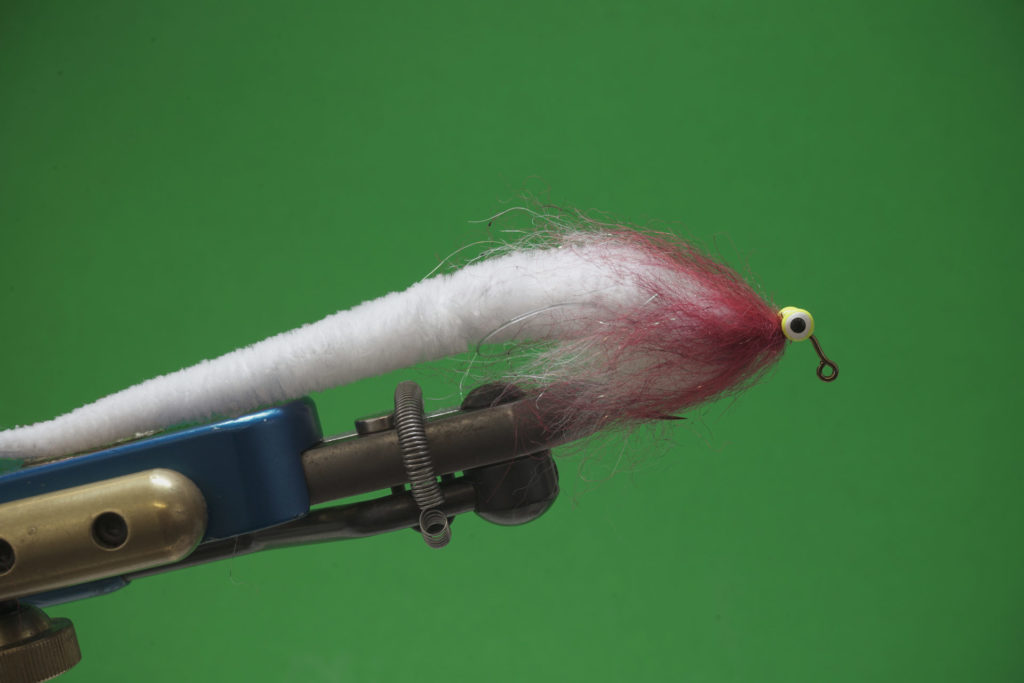It’s no secret that as fish grow, their desire for large, protein-rich food sources increases, protein that often comes in the form of baitfish. No matter if you chase large bull trout, lake trout, pike, Pacific salmon, bottom fish such as rockfish or lingcod or tropical, saltwater fish, they all prefer a steady diet of fresh fish.
Advertisement
The challenge with tying large baitfish is creating a profile and action that not only tempts and triggers a take, but also features a practical side that utilizes materials and construction techniques that are durable, suggests life and, perhaps most importantly, shed water, making them easier to cast. Dragon tails are one material that aids almost any baitfish pattern.
Built on a cord core, synthetic, tapered, chenille-like dragon tails provide durability and fantastic movement. They do absorb some water, which some contend adds weight to the rear of the fly, improving the fly’s action and behaviour when stripped. Developed and designed by Florida saltwater guide David Magnum, dragon tails are durable, mobile and easy to work with. They are available in a wide range of colours. You can also add additional spots and markings using permanent markers. In addition to the wide range of colours, dragon tails are offered in three different lengths, small (four inches), medium (six inches) and large (eight inches).
Advertisement
If you can only find larger-sized dragon tails but don’t want to use their full length, they can be shortened by cutting or pinching them to length from the butt end. Don’t dispose of the unused butt end. Using scissors designed to cut large synthetics and hair, the butt section can be trimmed and tapered to a point for use on a second fly, providing two dragon tails within one single, long, length.
Dragon tail patterns are typically simple, consisting of a long tail, body and eyes. Eyes can be glued onto the side of the body, dumbbell style, to both help sink the fly while providing a jig action or a fish mask. The blushing dragon also utilizes an up-eye jig hook as a foundation. Coupled with dumbbell eyes, the jig hook adds additional action to the fly while it rides hook point up, reducing the risk of fouling.
Advertisement
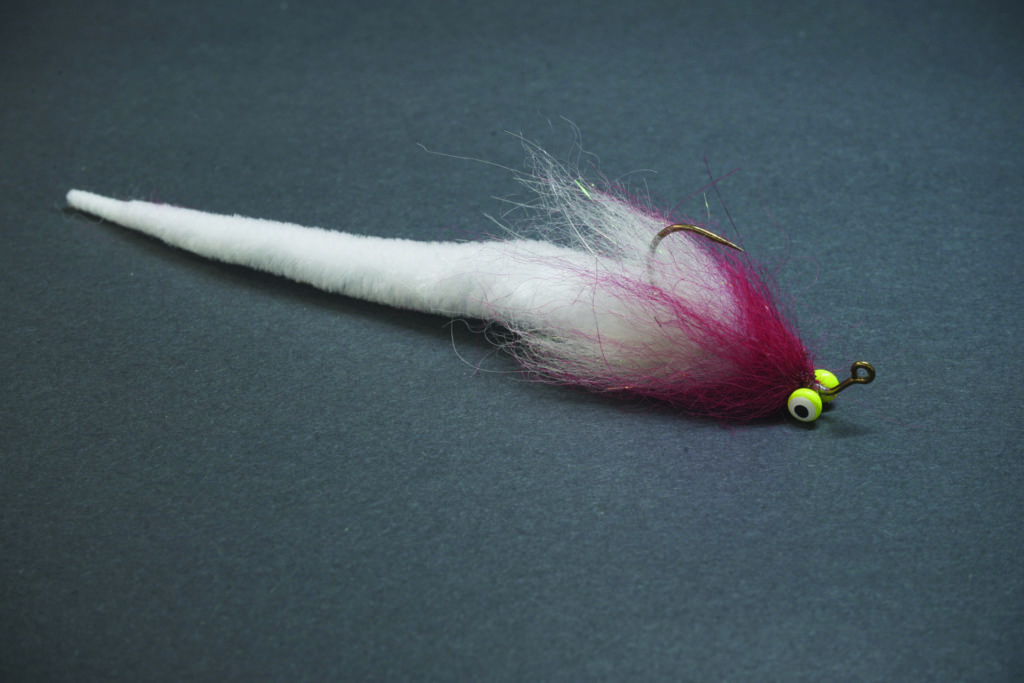
Fish masks are a fish-shaped plastic head featuring recesses for adhesive eyes that are affixed to the head area of the fly using superglue. Once in place, fish masks can be coloured to match the balance of the fly using a permanent marker. A coating of UV resin protects the paint scheme while locking the eyes in place.
After choosing the appropriate size and coloured tail or cutting a tail to length, expose the core at the butt end as you would with chenille. Using strong thread, such as 140 denier or gel spun, bind the dragon tail in place at the rear of the shank. Once tied in, wrapping back slightly onto the dragon tail provides additional security and helps reduce fouling. When securing them in place at the rear of the hook, tying the tail in as far back as possible also helps reduce fouling. Dragon tails can also be tied in at the head and secured in place along the top of the body, zonker style, using superglue.
It is always a good idea to reinforce the tip of the dragon tail to reduce the risk of unraveling after a solid, crushing shake-and-grab of a predatory fish. Some tiers trim a short section of the tip, reinforcing the trimmed end using superglue or thin-viscosity UV resin. Others skip trimming the factory tip, choosing to seal it with superglue or UV resin. You can also carefully singe the tip using a lighter. Once singed, roll the tip to a point using moistened fingers.
Long-tailed flies may foul around the hook bend when casting. A horizontal mono loop greatly reduces or eliminates this trait when using dragon tails. Using stiff mono or nylon, appropriate to the fly, secure the tags ends down each side of the shank, forming an approximately shank-length horizontal mono loop. For larger flies, 50-pound mono or nylon works well. The mono loop supports the tail, preventing it from wrapping around the bend. Once tied in, you can also roughen the loop using sandpaper and glue the base of the dragon tail to the mono loop. Roughening the loop provides a textured surface, improving adhesion.
Dragons have long held a place in the imagination of many. Now it seems dragon tails also hold a place with fish too. The next time you are looking to tie an oversized baitfish pattern, consider incorporating a dragon tail to add an extra coating of sauce to your fly. The fish you attract to your fly could be the stuff tales are made of.
How To Tie A Blushing Dragon
Materials
- Hook: Wide gape jig hook, #2/0
- Thread: GSP, white
- Loop (optional): 50-pound mono
- Tail: Dragon tail, white
- Body: Rear, llama pike/musky/saltwater brush, pearl; front, llama pike/musky/saltwater brush, red
- Eyes: Dumbbell eyes, large, colour to compliment
Tying Instructions
- Cover the hook shank with tying thread. Using figure eight wraps, secure the dumbbell eyes onto the shank just back from the return for the hook eye. Once initially secured, place horizontal wraps below the eyes, but above the shank, to further constrict the thread and lock the eyes in place. Add a drop of brushable superglue or UV resin for additional security.
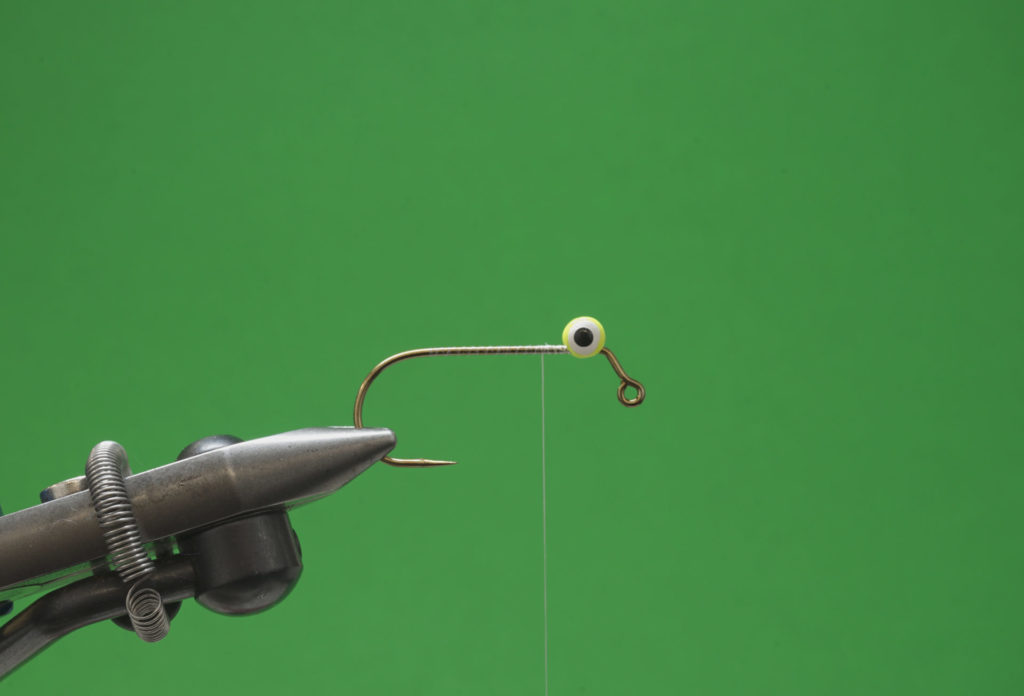
- Secure a shank-length horizontal mono loop at the rear of the shank. Secure the tag ends of the mono loop, beginning just behind the dumbbell eyes along each side of the hook. Squashing the tag ends using flat nose pliers helps stop them from rolling around the shank. Cover the tags ends with additional, firm wraps of thread. Once in place, secure the tie-in area with brushable superglue or UV resin.
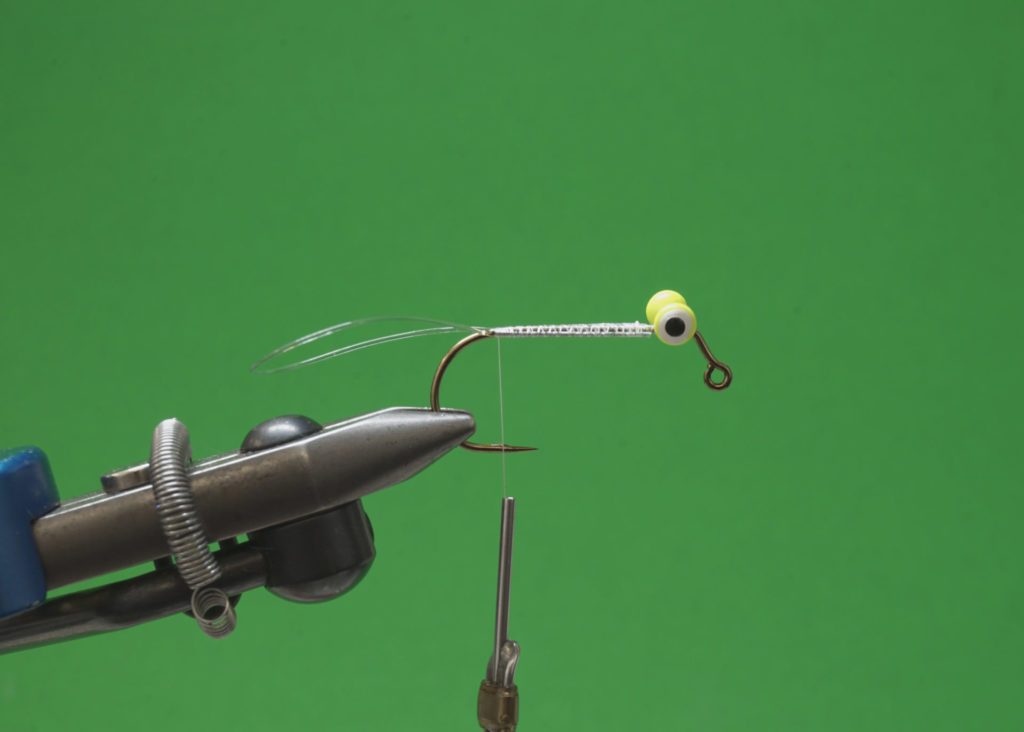
- Select a dragon tail and pinch or trim it to length so once tied in it will extend past the shank, four shank lengths. Using your thumb and forefinger, strip the trimmed end of the dragon tail to the core. Bind the dragon tail to the top of the shank by the exposed core using firm thread wraps. Wind the tying thread back onto the base of the dragon tail for additional security. Coat the finished wraps with brushable superglue or UV resin. Singe or glue the tip of the dragon tail to prevent it from unravelling. If you wish, roughen the mono loop using sandpaper. Glue the base of the dragon tail to the roughened tip area of the mono loop.
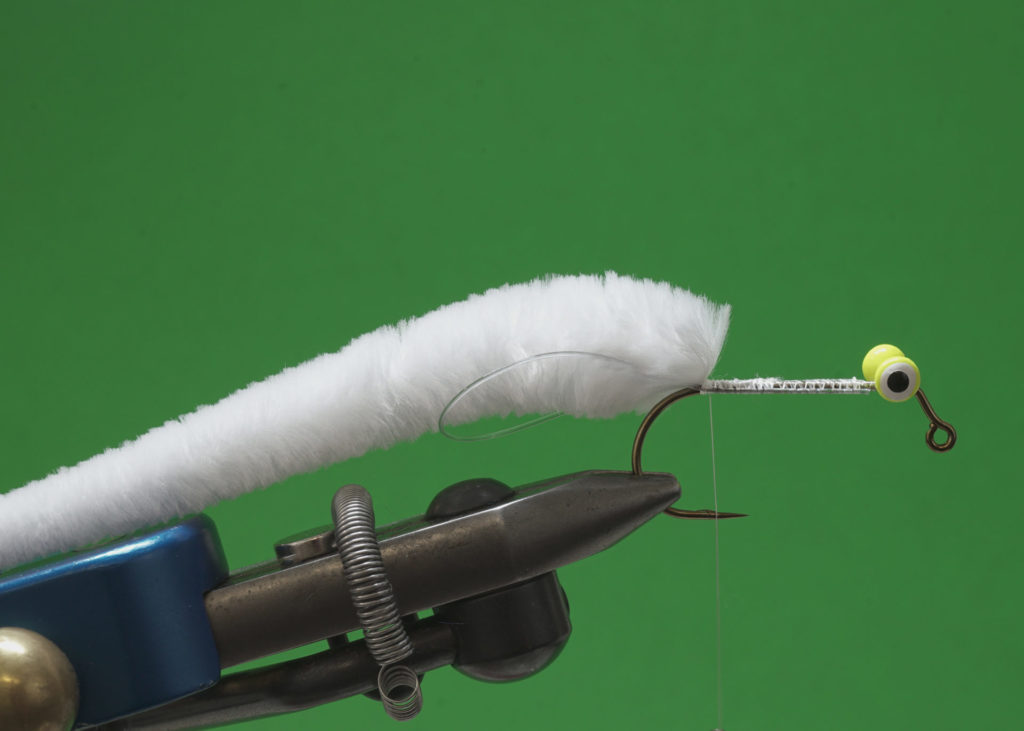
- Tie in a pearl llama brush at the base of the tail. Wind the llama brush forward using close-touching turns to the three-quarters point of the shank. Sweep the llama fibres back after each wrap to avoid trapping any fibres down. Tie off the llama brush. Using a stout pair of scissors or wire cutters, trim the llama brush flush with the shank. Cover the tie-off area with thread and add a coat of brushable superglue or UV resin for added security. Use a dubbing needle or brush to comb out and sweep the llama fibres rearwards.
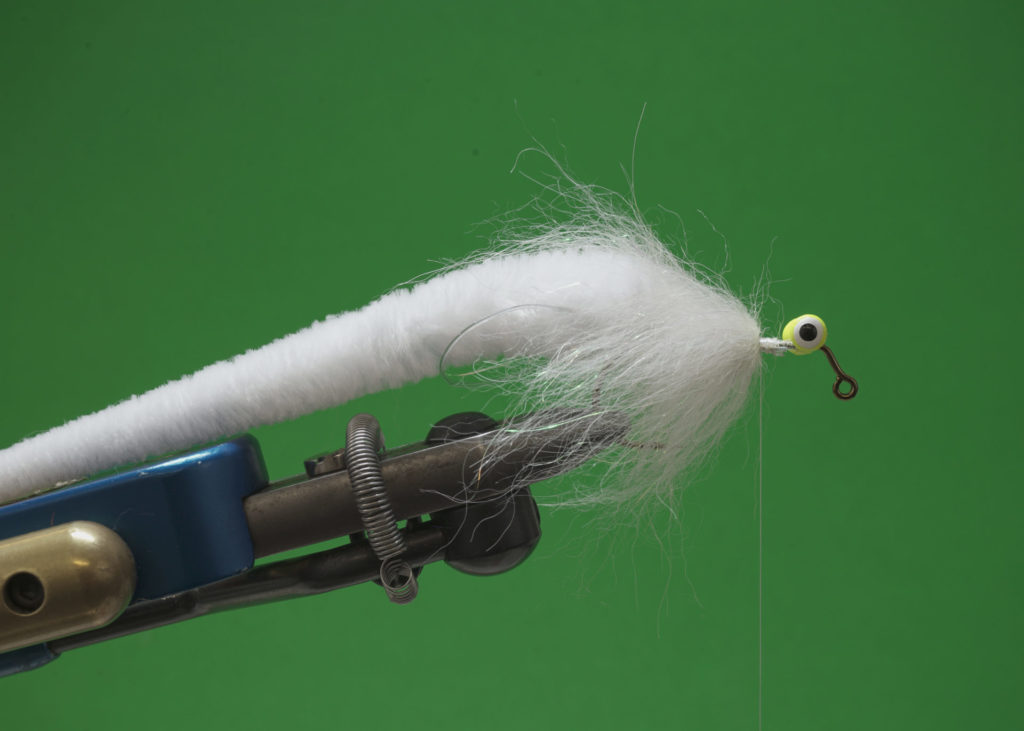
- Tie in a red llama brush directly in front of the tie-off point for the pearl brush. Wind the red llama brush forward three to four times to the rear of the dumbbell eyes, in the same manner as the pearl brush. Tie off and remove the excess llama brush directly in front of the dumbbell eyes.
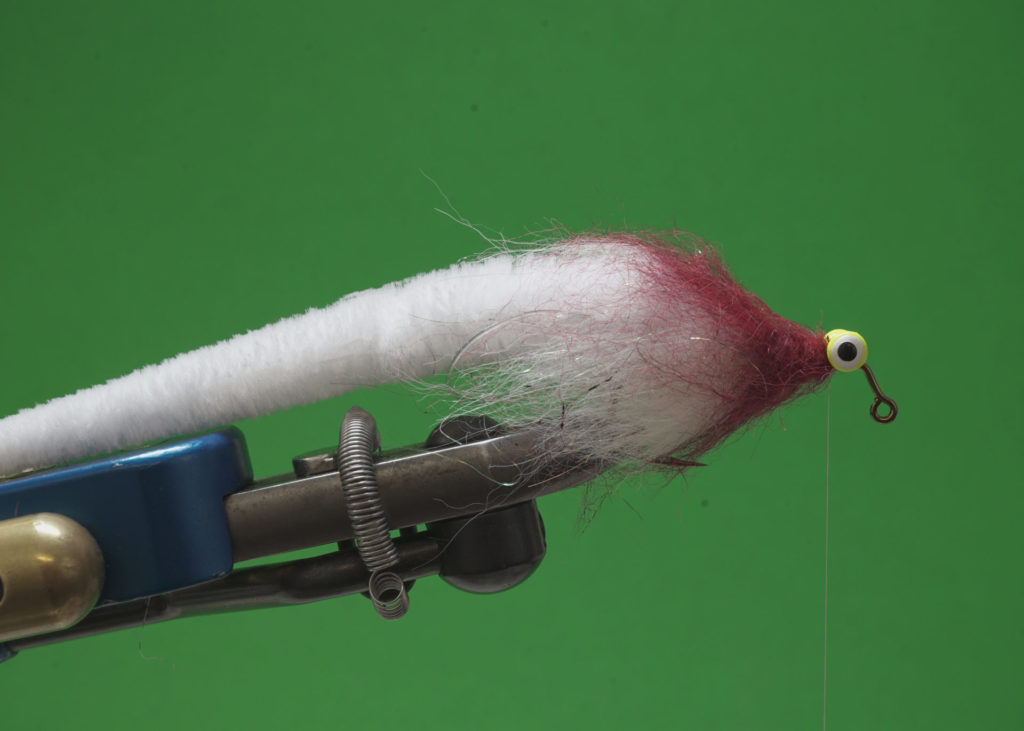
- Bring the tying thread forward so it hangs directly in front of the dumbbell eyes. Build a neat, tapered head in front of the eyes. Whip finish and apply brushable superglue or UV resin to the tie-off area. Give the finished fly a final brush to blend and sweep the lama fibres back.
